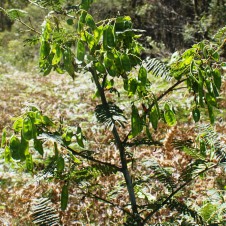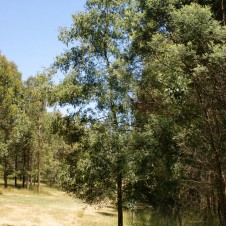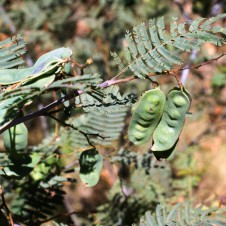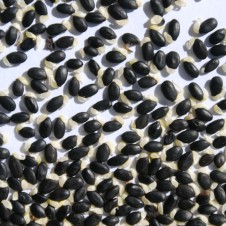General Description: Erect or spreading tall shrub or small tree to 5 m tall, with feathery grey-green foliage, and pale yellow, globular, flower clusters, arising from leaf axils. The bark is dark brown and smooth and is often blotched with grey lichens. Leaves are Bipinnate and alternate along angled stems, each pair has a single gland at the base.
Flowers and fruit: Clustered in round, bright yellow heads, to 1 cm wide, in loose, axillary panicles. Flowers from July to November. Fruit is an oblong pod to 7 x 1.5 cm, not constricted between seeds. Seeds 5-10, dark brown shiny ovoid, 4-5 mm long; funicle pale brown and shorter than seed.
Conservation: [r] Rare in Victoria. [endemic] Found only in Victoria.
Site Preference and Tolerances: Grows usually in large stands, in subalpine eucalypt forest or in tall open forest. Occurs on poor soils in tall, moist, highland forests and tolerates dry, well drained conditions. This species is frost and snow tolerant and grows in full sun and semi to dappled shade.
Life Span: Medium, 20 to 80 years.
Wildlife Value: Wildlife Value: Is a butterfly food plant by providing food for caterpillars. Attracts both seed-eating and insect-eating birds. Many different species of adult beetles and their larvae feed on the foliage. The seed-stalks (funicles) of fallen seeds are sought by ants. Its gum is a food source of gliders and possums.
Other Values and Uses: This is a lovely soft foliaged small shade tree that is also excellent for erosion control.
Other Scientific Names: Acacia nanodealbata, Racosperma nanodealbatum
Germination Information: Need to break seed dormancy and heat treatment using boiling or just boiled water is usually used. I prefer to pour just boiled water over the seed and leave it overnight and then plant the seeds the next morning.




